Axon’s Automotive Anorak: Three cars that were worse than the cars they replaced
Next Tuesday, 10th September, the collective eyes of the automotive world will briefly be focusing on one car, and one car only; the brand-new Land Rover Defender. After a long wait, the new Defender is finally due to be publicly revealed for the very first time in undisguised form on the first Press Day of the 2019 IAA Frankfurt Auto Show next week.

As soon as the covers are whipped off in Germany, the new Defender will immediately come under closer scrutiny than almost any new car in recent years, with social media inevitably lighting up within seconds with everyone’s personal ‘expert’ opinion and view of the car.
At this point I will feel rather sorry and sympathetic for Land Rover, as no matter how good (and it will be) the all-new Defender is, the hordes of self-styled experts will all be tweeting ‘Oh, it’s not as good as the real Land Rover’ and so on.
Basically, despite the many years and man hours of development and expertise, not to mention JLR’s considerable investment, Land Rover will inevitably be on a hiding to nothing with the initial reaction to the new Defender. Replacing the irreplaceable is a thankless task, and the original (some might say ‘real’) Land Rover (from the 1948 ‘Series 1’ through to the final 2016 Defender) is indeed an iconic motor vehicle; a real legend in its own life time.
Based on the little I’ve seen so far of the disguised new Defender driving up the Hill at the Goodwood Festival of Speed presented by Mastercard back in July, plus the one undisguised spy shot revealed to-date, taken on the set of the next James Bond movie, the new Land Rover looks like it will be a fine machine. Its upright profile and sharply-truncated rear recalling the ‘classic’ Defender profile we all know and love.
Compared to the now legendary original Land Rover (as it inevitably will be), the new Defender can’t win, no matter how good a 4x4 it is. The new car won’t have the charm, nostalgia and affection of the 1948-2016 original, and crucially, it will now be aimed at a different audience, more concerned about dropping little Johnny off at school on time than driving over a ploughed field with pigs in the back or exploring the darkest recesses of deepest Africa.
The challenge of replacing such a strong, recognisable and well-considered automotive icon as the Land Rover is an unenviable task, and one not to be taken lightly. A handful of other manufacturers have succeeding in replacing a true motoring legend with a suitably appropriate and commercially successful successor, but examples of these are rare, as highlighted below with six automotive greats whose successors either hit, or ran very wide, of the mark.
Near-legendary cars that proved troublesome (or impossible) to replace include the finest-handling car of the 1970s, the Alfasud, which was poorly superseded by the initially lackluster Alfa 33. The same applied to BMC/BL’s advanced ADO16 Austin-Morris 1,100-1,300 range, consistently Britain’s best-selling new car for many years, and replaced by the Austin Allegro. Need I say more… It’s a similar story with the admired Morris Minor and its Marina replacement!
Occasionally the opposite can happen, thankfully. An automotive dud being replaced by a decent car, good examples including the dreadful ‘how on earth did it succeed?!’ Volkswagen Beetle and its far more accomplished VW Golf replacement, plus the final and embarrassingly bad Ford Escort Mark IV, which was mercifully put out of its misery by the highly capable first-generation Focus.
In addition to the Land Rover Series 1-Defender, half-a-dozen other undisputable motoring legends that their makers either performed a master-stroke to replace, or got it hopelessly wrong, are the following six automotive icons.
Miss: Ford Mustang / Ford Mustang II
Developed in a record 18 months, the Ford Mustang was an instant sales success and created a new sub-sector of automobile, the so-called ‘Pony’ car, with American domestic market rivals appearing thick and fast from GM, Chrysler and AMC Rambler.
Based around the platform and mechanicals of the regular Ford Falcon sub-compact family sedan, the Mustang had would-be customers queuing in their local American Ford showrooms to place an order for this new ‘must have’ sporting coupe and convertible which was introduced as a Model Year 1964.5 car on 17th April at the 1964 World’s Fair. Launch engine choices ranged from a 2.8-litre straight six, through to a 4.7-litre V8. For the 1965 Model Year and beyond, Ford made subtle changes to the Mustang to keep this sporting model ahead of its competitors.
This all came to an abrupt end for the 1974 Model Year when Ford replaced its cool Mustang with the very uncool Mustang II, a more compact coupe based on the platform of the economy Pinto entry model, most famous for catching fire in rear-end shunts! The new compact (by American standards) Mustang II was instantly regarded by enthusiasts as having abandoned essential aspects of the Mustang heritage, the car’s appeal moving from macho muscle to a softer, more feminine form. As a car, the Mustang II was an insult to the model name, but as a sales success, the model had some merit.
Miss: (Ferrari) Dino 246 GT / (Ferrari) Dino 308 GT4
The ‘baby Ferrari’ first appeared in production form in 1968 under the Dino brand name (not Ferrari) as a more affordable Maranello model to rival the Porsche 911. The Dino’s classic styling was the work of Leonardo Fioravanti at Pininfarina, the model being Maranello’s first true mid-engined production model, the previous 250LM being a homologation special. The Dino was powered by a transverse-mounted midship V6, initially of just 2.0-litres (the 206 GT), and then enlarged to a 2.4-litre, 192 bhp V6 for the 246 GT, with 2,245 examples built.
When the initial successor to the striking Dino 246 GT was first announced in 1973, many Tifosi shuddered at the sight of the dumpy 2+2 308 GT4, the first (and only) production Ferrari ever designed by Bertone. In its own right the new Dino 308 GT4 was not unpleasant, although not as stylish as its contemporary mid-engined 2+2 rivals, the Lamborghini Urraco and Maserati Marek. But when compared to the classic Pininfarina Dino it replaced, the GT4 looked like a sorry successor. In 1975 the Bertone GT4 was joined by the striking Pininfarina-designed Ferrari 308 GTB, which conceptually as a mid-engined, two-seater was far more in keeping with the original late-1960s Dino.
Miss: Jaguar E-Type / Jaguar XJ-S
Launched to huge fanfare at the 1961 Geneva Motor Show, Jaguar’s E-Type was an instant hit, described at the time by Enzo Ferrari no less as the most beautiful car ever made! The E-Type’s combination of beauty, high performance (with a claimed 150mph top speed), and competitive pricing established the model as a 1960s icon and legend of the motoring world. Through later Series 2 and V12-powered Series 3 updates, the E-Type gained some middle-aged and lost some its sporting edge, but the model remained desirable and sought-after throughout its 14-year career.
Being such a tough act to follow, expectation were high for Jaguar’s E-Type replacement, so when the flabby XJ-S V12 GT coupe was first revealed in late 1975 onlookers and enthusiasts alike were in a state of shock and disappointment. The XJ-S went on to progress with age, the Jaguar enjoying a 21-year production run, with sales (and the car) improving with each passing year. One thing the XJ-S wasn’t though was a true successor to the legendary Jaguar E-Type.
Hit and Miss: Fiat 500 / Fiat 126
As strong an Italian icon as the Trevi Fountain and da Vinci’s David, more than 3.6 million Fiat 500s were produced during a 17-year production run that commenced in 1957. Created by Fiat’s gifted engineer Dante Giacosa, the Nuova 500 hit his objectives of building an economical city car to attract first time buyers such as the ‘baby boomers’ who were giving-up their scooters and moving up to cars. The tiny Fiat matched their requirements perfectly, resulting in full order books for years to come, with the tiny, rotund rear-engined 500 remaining as popular today as when it was first released.
When Fiat first revealed the 500’s true successor in 1972 – the Fiat 126 – the new squared-off model lacked the charm and friendly character of its 1957 predecessor, with the Italians in particular taking a while to warm to the more modern rear-engined replacement. Ultimately the 126 proved to be highly successful for Fiat, especially in Poland where the car was built until 2000, the model now enjoying cult status there.
Hit: Citroën DS / Citroën CX
Trying to convincingly replace the pioneering Citroën DS of 1955 was as tough a task as creating a new Mini or Land Rover, but miraculously the innovative Parisian manufacturer pulled off a coup when it announced the equally daring CX in 1974 as a fitting successor.
Like the DS before it, the CX initially lacked the engine choice the aerodynamic saloon deserved, just as the DS was saddled at first with pre-war Traction Avant motors at launch, but as the CX range expanded, so did its engine programme, ultimately including smooth turbocharged petrol and diesel engines. The DS was certainly a very tough act to follow, but Citroën excelled itself with its CX successor, the executive express quickly being named the European Car of the Year for 1975.
Hit: BMC Mini / MINI Hatch (R50)
The Alec Issigonis masterclass in packaging, efficiency and driving pleasure has still to be equaled, never mind bettered. The BMC/BL/Rover Mini, launched 60 years ago as the seminal city car, defined a new genre of small cars when introduced in 1959. Issigonis envisaged the Mini as the most compact ‘cube’ shape possible to fit four passengers, choosing space-saving front-wheel-drive with a transverse-mounted engine, ingeniously placing the gearbox under the motor for the very first time, and using compact rubber-cone suspension, attached to tiny 10-inch wheels to help minimise interior space intrusion.
On the road, the economic Mini outhandled its rivals, being nippy, easy to park, great fun, and ultimately cool, the miniature Austin and Morris in tuned Cooper form proving hugely successful in competition. A classless car favoured by Royalty and celebrities, as well as working dads and busy shopping mums, the Mini has set the standard for all future small about-town cars to follow.
When production of the classic Mini finally came to an end in 2000, cash-strapped Rover had its all-new successor waiting in the wings. The new car being clearly inspired by the 1959 original, a classless two-box, (now) three-door hatchback, considerably larger than the diminutive Issigonis Mini, but with the same charm and spirit. Often, and incorrectly, referred to as the BMW Mini, the new-generation R50 MINI was in fact fully developed by Rover in the UK, with BMW signing-off the model once it had been completed.
Though now too big to really justify the Mini name (especially in subsequent forms, Maxi being a more fitting name for the latest Countryman model!), each of the new-generation Minis have enjoyed considerable sales success, plus a fine and enviable reputation for good quality, to help create an admired and aspiration brand.
Ford
Mustang
Land Rover
Defender
Ferrari
246
308
Dino
Jaguar
E-Type
XJS
Fiat
500
126
Citroen
DS
CX
Mini

















